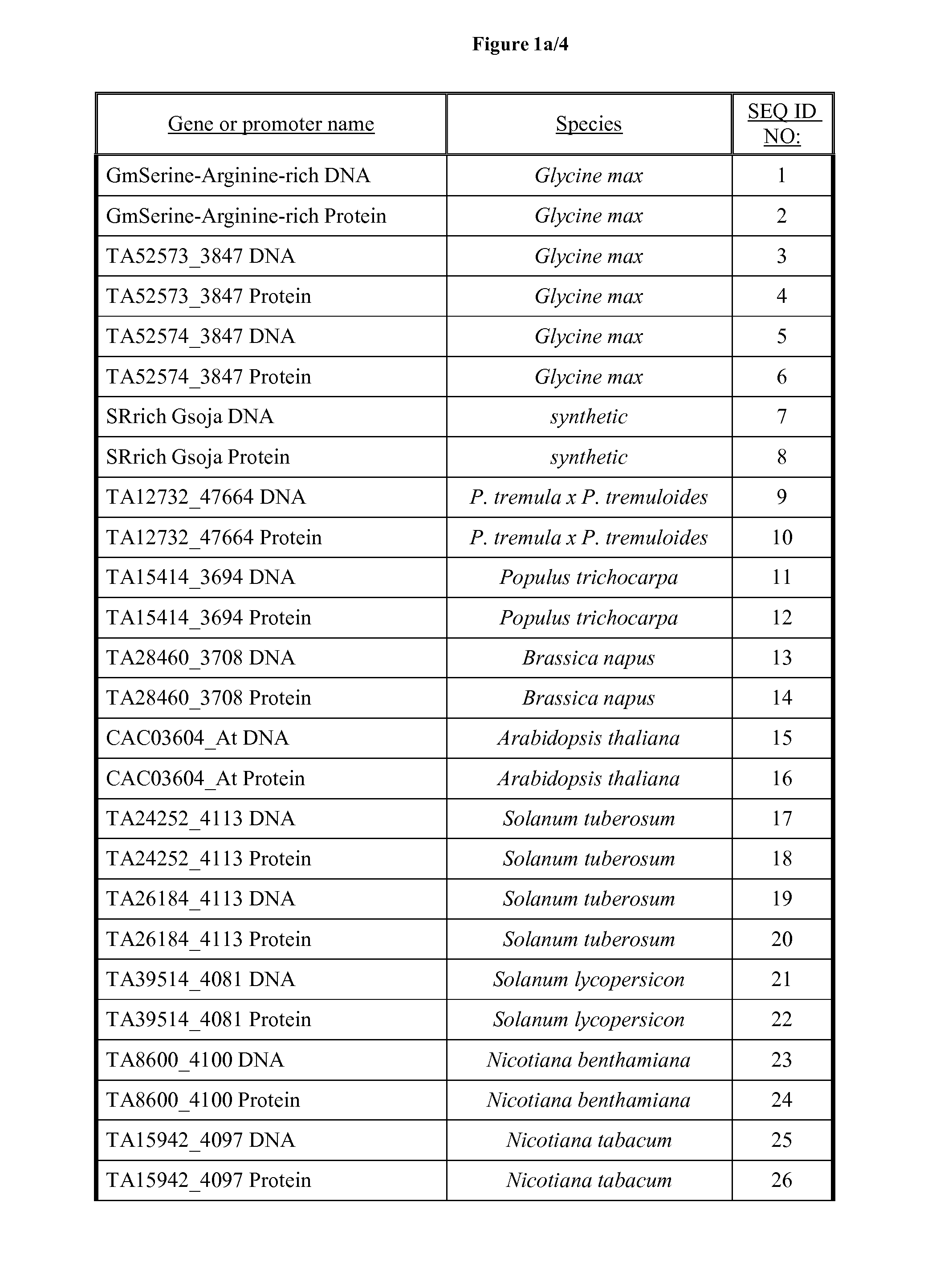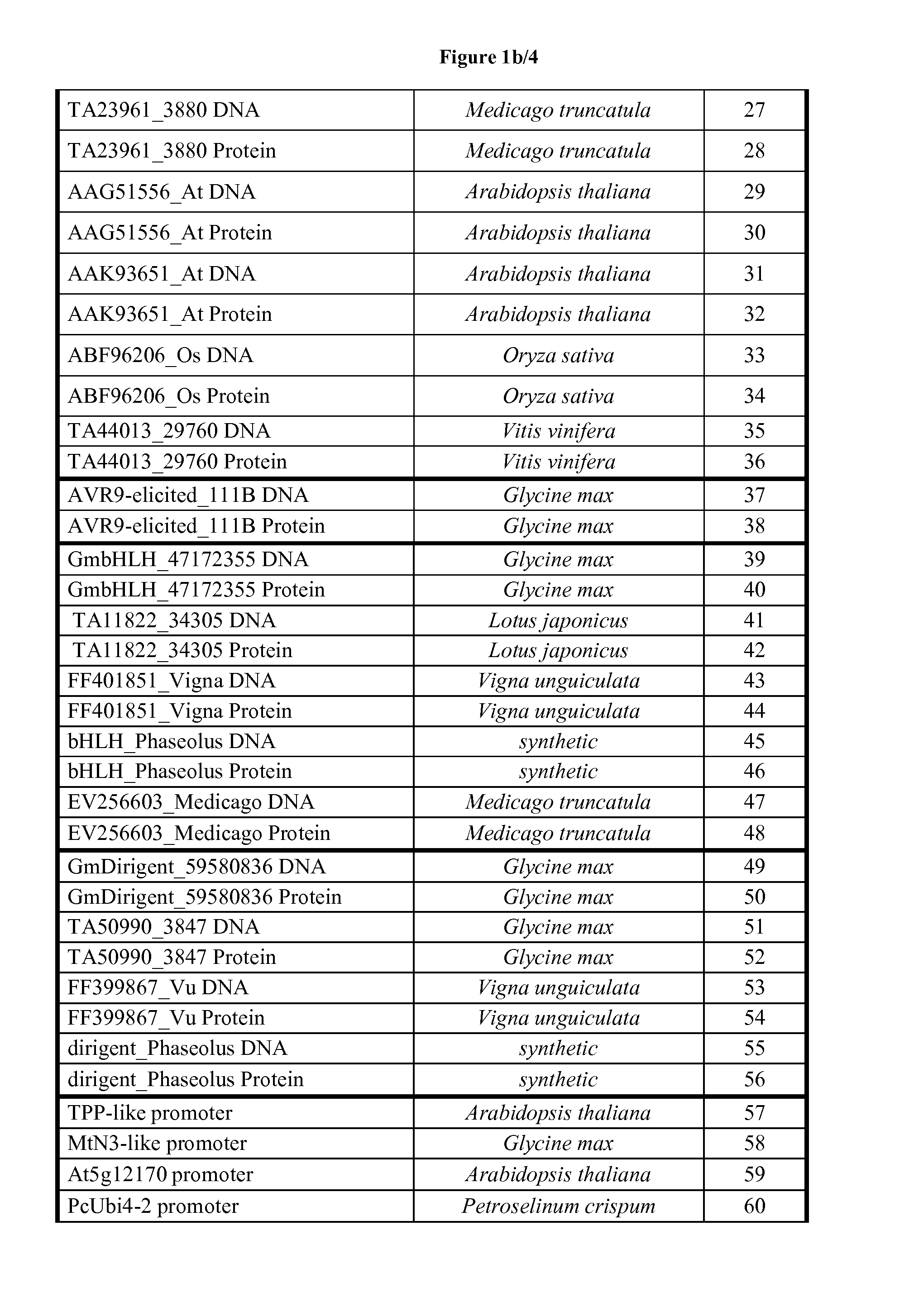Plant Root-Specific Nematode Resistance
a plant root and nematode technology, applied in the field of plant root-specific nematode resistance and nematode resistance, can solve the problems of soybean production no longer economically possible without, significant losses in susceptible crops, and estimated $100 billion crop loss worldwide, and achieve the effect of overcoming or alleviating the infestation of nematode in valuable agricultural crops
- Summary
- Abstract
- Description
- Claims
- Application Information
AI Technical Summary
Benefits of technology
Problems solved by technology
Method used
Image
Examples
example 1
Vector Construction
[0066]Using a bioinformatics approach, four soybean genes, TA52573—3847 (SEQ ID NO:3), AVR9-elicited—111B (SEQ ID NO:37), GmbHLH—47172355 (SEQ ID NO:39), and GmDirigent—59580836 (SEQ ID NO:49) were identified as being down-regulated in syncytia of SCN-infected soybean roots, as compared to uninfected root tissue. As described herein, the gene designated TA52573—3847 SEQ ID NO:3 encodes a serine-arginine rich protein. The GmSerine-Arginine-rich gene (SEQ ID NO:1) employed in the isolated expression vectors described below encodes a protein having 93% sequence identity to TA52573—3847 (SEQ ID NO:3).
[0067]The constitutive ubiquitin promoter from parsley (WO 2003 / 102198; SEQ ID NO:60, designated PcUbi4) the nematode-inducible MtN3-like promoter from soybean (WO 2008 / 095887, SEQ ID NO:58), the nematode-inducible TPP-like promoter from Arabidopsis (WO 2008 / 071726, SEQ ID NO:57) and the constitutive Super Promoter (see U.S. Pat. No. 5,955,646) were used in to make the co...
example 2
[0069]A bioassay to assess nematode resistance conferred by the polynucleotides described herein was performed using a rooted plant assay system disclosed in commonly owned copending U.S. Ser. No. 12 / 001,234. Transgenic roots are generated after transformation with the binary vectors described in Example 1. Multiple transgenic root lines are sub-cultured and inoculated with surface-decontaminated race 3 SCN second stage juveniles (J2) at the level of about 500 J2 / well. Four weeks after nematode inoculation, the cyst number in each well is counted. For each transformation construct, the number of cysts per line is calculated to determine the average cyst count and standard error for the construct. The cyst count values for each transformation construct is compared to the cyst count values of an empty vector control tested in parallel to determine if the construct tested results in a reduction in cyst count. Rooted explant cultures transformed with vectors RBM024, RBM...
PUM
| Property | Measurement | Unit |
|---|---|---|
| resistance | aaaaa | aaaaa |
| concentrations | aaaaa | aaaaa |
| temperature | aaaaa | aaaaa |
Abstract
Description
Claims
Application Information
 Login to View More
Login to View More - R&D
- Intellectual Property
- Life Sciences
- Materials
- Tech Scout
- Unparalleled Data Quality
- Higher Quality Content
- 60% Fewer Hallucinations
Browse by: Latest US Patents, China's latest patents, Technical Efficacy Thesaurus, Application Domain, Technology Topic, Popular Technical Reports.
© 2025 PatSnap. All rights reserved.Legal|Privacy policy|Modern Slavery Act Transparency Statement|Sitemap|About US| Contact US: help@patsnap.com



